A standard 1963 nickel ranges from face value to a few dollars in circulated condition. The 1963 Philadelphia (no mint mark) is more valuable in top grades, with MS 67+ examples selling for thousands. The 1963-D Denver mint also commands premium prices, especially Full Step examples showing all five clearly defined steps on Monticello. Proof coins with Deep Cameo PR70 grades are highly sought after. While there are no major documented errors for 1963 nickels, the most valuable examples are high-grade, uncirculated coins with Full Step designation rather than error varieties.
Most collectors overlook 1963 nickels as common change, but certain specimens can fetch hundreds or even thousands of dollars. The difference lies in understanding mint marks, step designations, and grading subtleties that separate a five-cent piece from a valuable collectible. Whether you’ve inherited a coin collection or discovered old nickels in your attic, knowing what makes a 1963 nickel valuable could turn spare change into serious profit.
Understanding the 1963 Jefferson Nickel
The United States Mint produced Jefferson nickels at two facilities in 1963: Philadelphia and Denver. Philadelphia coins carry no mint mark, while Denver nickels display a small “D” on the reverse near Monticello’s right side. The total combined mintage exceeded 350 million coins, making them abundant in circulation but rare in pristine condition.
These nickels contain 75% copper and 25% nickel, measuring 21.2 millimeters in diameter. The obverse features Thomas Jefferson’s profile designed by Felix Schlag, while the reverse displays his Virginia estate, Monticello. The architectural details on Monticello’s steps become crucial for determining premium values.
1963 Philadelphia Nickel Value (No Mint Mark)
The Philadelphia Mint struck approximately 178 million nickels in 1963 without any mint mark. Circulated examples in Good to Fine condition remain at face value or slightly above, typically selling for $0.10 to $0.50 depending on wear.
Uncirculated specimens show dramatic value increases based on grade:
| Grade | Estimated Value |
|---|---|
| MS-60 | $2.50 – $4.00 |
| MS-63 | $8.00 – $12.00 |
| MS-65 | $45.00 – $75.00 |
| MS-66 | $150.00 – $225.00 |
| MS-67 | $850.00 – $1,500.00 |
| MS-67+ Full Steps | $2,800.00 – $4,200.00 |
Heritage Auctions recorded a 1963 Philadelphia nickel graded MS-67 with Full Steps selling for $3,760 in January 2023. The Philadelphia coins generally command higher prices than Denver counterparts in equivalent grades, particularly when featuring complete step definition. A standard MS-65 example without Full Steps designation typically trades around $60, while the same grade with Full Steps can reach $180 or more.
1963-D Denver Nickel Worth
Denver produced approximately 276 million nickels in 1963, identifiable by the small “D” mint mark. Despite higher mintage numbers, the Denver facility occasionally produced sharper strikes that collectors prize today.
Circulated 1963-D nickels in Average Circulated condition trade for face value to $0.75. The uncirculated market shows these values:
| Grade | Estimated Value |
|---|---|
| MS-60 | $1.50 – $3.00 |
| MS-63 | $6.00 – $10.00 |
| MS-65 | $35.00 – $60.00 |
| MS-66 | $120.00 – $185.00 |
| MS-67 | $650.00 – $1,100.00 |
| MS-67 Full Steps | $1,800.00 – $3,200.00 |
A 1963-D graded MS-66 with Full Steps sold for $2,115 through Stack’s Bowers in March 2023. Denver nickels with Full Steps designation in MS-66 or higher represent exceptional finds, as the Denver Mint’s striking quality in 1963 produced fewer coins with complete step detail compared to later years.
The Full Steps Premium Explained
The “Full Steps” designation refers to the five horizontal lines representing stairs on Monticello’s entrance. Most nickels show weak, incomplete, or merged step details due to die wear, striking pressure, or planchet quality. Professional grading services like PCGS and NGC award the Full Steps designation only when all five steps display complete separation with no weakness.
This designation dramatically increases value. A 1963 Philadelphia MS-65 nickel without Full Steps sells for approximately $60, while the same grade with Full Steps designation commands $180 to $240. For MS-67 specimens, the difference expands even further—standard MS-67 examples bring $850 to $1,500, but Full Steps versions reach $2,800 to $4,200.
Examining steps requires magnification. Under 10x magnification, count from the bottom step upward. Even slight merging of any two steps disqualifies the coin from Full Steps designation. Approximately 2-3% of uncirculated 1963 nickels meet this strict standard, explaining the substantial premium.
1963 Proof Nickel Specifications
The San Francisco Mint produced 3,075,645 proof nickels in 1963 specifically for collectors. These coins feature mirror-like fields with frosted design elements, created through special polished dies and multiple strikes.
Standard 1963 proof nickels in PR-65 grade sell for $8 to $15. Higher grades show these values:
| Grade | Estimated Value |
|---|---|
| PR-67 | $25.00 – $40.00 |
| PR-68 | $75.00 – $120.00 |
| PR-69 | $280.00 – $450.00 |
| PR-70 Deep Cameo | $1,200.00 – $1,800.00 |
The “Deep Cameo” designation indicates exceptional contrast between frosted devices and mirrored fields. A 1963 proof nickel graded PR-69 Deep Cameo sold for $1,410 through Great Collections in November 2022. Only a handful of PR-70 Deep Cameo examples exist, representing absolute perfection without any microscopic imperfections.
Proof coins occasionally display Full Steps as well, though this designation applies primarily to business strikes. Proof nickels typically show better step definition than circulation strikes due to their special production process.
Error Varieties and Oddities
Unlike some vintage years featuring dramatic mint errors, 1963 nickels lack widely recognized error varieties that command significant premiums. No major doubled dies, repunched mint marks, or off-metal strikes have been documented and verified for this year.
Collectors occasionally encounter minor varieties including:
Die Cracks and Cuds: Small raised lines from cracked dies, typically adding $5 to $25 in value depending on prominence and coin grade.
Struck-Through Errors: Foreign material between die and planchet creates ghosted areas, worth $10 to $50 for dramatic examples.
Off-Center Strikes: Coins struck outside the collar showing partial designs. Minor off-center strikes (5-10%) add $15 to $40, while dramatic examples (50%+) with full date visible can reach $100 to $200.
Lamination Errors: Metal peeling from planchet surface, valued at $8 to $30 depending on size and location.
Most error premiums pale compared to high-grade, Full Steps examples. A MS-67 Full Steps nickel consistently outvalues error coins by substantial margins. Collectors focusing on 1963 nickels typically prioritize grade and step definition over hunting scarce errors.
Maximizing Your 1963 Nickel Investment
Start by examining any 1963 nickels for mint marks using a magnifying glass. Separate Philadelphia and Denver examples, then assess condition. Coins showing minimal wear, strong luster, and no discoloration warrant professional grading if the Full Steps appear present.
Professional grading through PCGS or NGC costs $20 to $40 per coin depending on service level. This investment makes sense only for apparently high-grade specimens. A coin that might grade MS-66 or better with Full Steps justifies grading costs, while circulated or average uncirculated examples don’t recover the expense.
Check sold auction results on Heritage Auctions, Stack’s Bowers, and Great Collections to understand current market values. Prices fluctuate based on collector demand, overall coin market conditions, and available inventory. The 1963 nickel market remains stable with gradual appreciation for top-tier examples, making quality specimens worthwhile long-term holdings for patient collectors.
You may be interested:
- 1859 Indian Head Penny Coin Value Complete Errors List And No Mint Mark Worth Guide For Collectors
- 1911 V Nickel Coin Value Guide Complete Errors List And No Mint Mark Worth Today
- 1902 Dime Coin Value Complete Errors List With O S And No Mint Mark Worth Guide
- 1788 Quarter Coin Value Complete Guide Errors List And D S P Mint Mark Worth Revealed
- 1776 To 1976 Bicentennial Half Dollar Coin Value Complete Errors List And What Your D S And No Mint Mark Coins Are Actually Worth
- 1990 Penny Coin Value Errors List How D S And No Mint Mark Pennies Are Worth Thousands Of Dollars

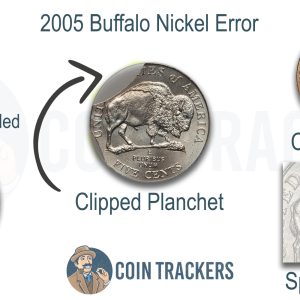
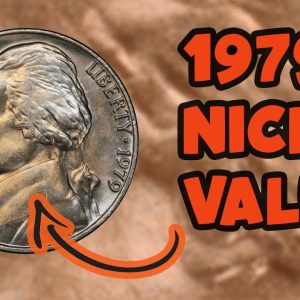
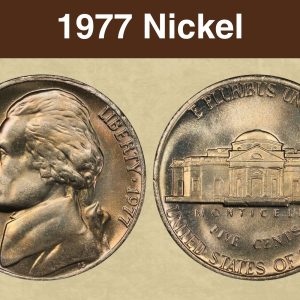
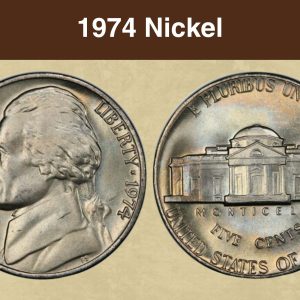
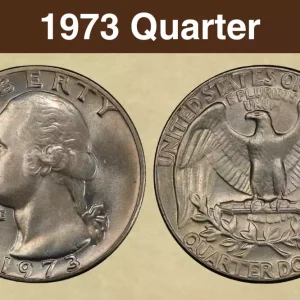
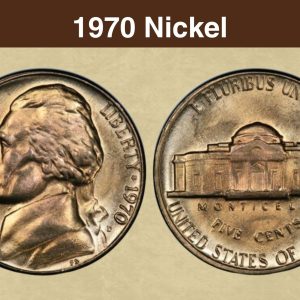
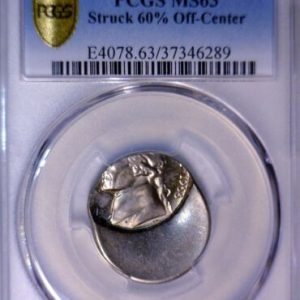
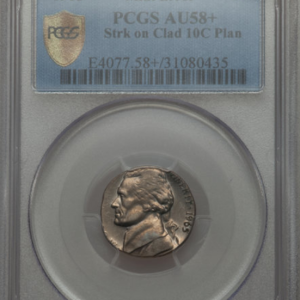
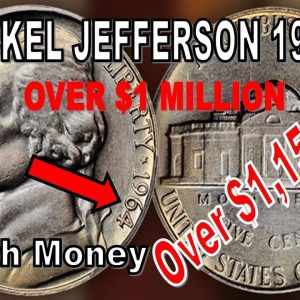
Is a 1963 nickel with no mint mark worth anything?
A 1963 nickel with no mint mark is a standard Philadelphia-minted coin, worth little more than its face value of 5 cents in circulated condition. However, a 1963 nickel could be valuable if it is an error coin, such as one struck on a Lincoln cent planchet, a 1963 DDR (Doubled Die Reverse) variety, or a high-grade full steps example in mint state, which are scarce.
What are the errors on a 1963 D nickel?
Common 1963-D nickel errors include doubling on the date (especially the ‘6’) and various mint mark errors, such as repunched mint marks (RPMs) with different orientations. Other errors can involve die breaks, cuds (raised areas of metal from die damage), die cracks, or struck-through errors, like retained staples. The 1963-D nickel is known for a WDDO-001 (doubled die obverse) and a WDDR-001 (doubled die reverse), which appear as hub doubling on the date and the text.
What nickel error to look for?
Key nickel errors to look for include doubled dies, where design elements are doubled due to die strikes, off-center strikes, where the coin is struck outside its intended position, and mint mark errors, such as doubled or missing mint marks. Other valuable errors are speared bison on 2005 nickels, the 1943 double die Jefferson nickel, and 1937-D Buffalo nickel three legs.
What is a “proof” 1963 nickel?
Each coin is created with a meticulously hand-polished coin blank that is individually fed into the press and struck at least twice. The result is low-mintage coins with mirror-like surfaces and frosted details. With a mintage of only 3,075,645 add this 1963 Jefferson nickel Proof to your collection today! Year: 1963.